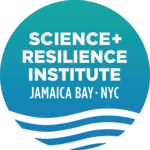Detecting Water Quality Regime Shifts in Jamaica Bay
Brett F. Branco, Ph.D., Brooklyn College; Sandra Baptista, Ph.D. Columbia University; Patrick Sullivan, Cornell University; Mark J. Ringenary, National Park Service; Beau Ranheim, NYC Department of Environmental Protection
The New York City Department of Environmental Protection (NYCDEP) and Gateway National Recreation Area (GNRA) of the National Park Service (NPS) have been collecting and archiving water quality data in Jamaica Bay for approximately 60 years and 25 years respectively. Despite the rich data sets available, past analysis has been limited primarily to univariate time series trend analysis and spatial averaging. Temporal and spatial patterns and trends in water quality are difficult to quantify and interpret due to the large number of variables involved and the complex interactions between them. Thus, establishing cause and effect relationships between perturbations/disturbances (natural or anthropogenic) and water quality parameters requires more sophisticated multivariate techniques.
Additionally, consortium partners in the Science and Resilience Institute at Jamaica Bay (SRI) are proposing to expand the inventory of monitoring parameters and resilience indicators in Jamaica Bay. These new data streams will need to be integrated with existing data sets collected by NYCDEP and GNRA and an analysis protocol will need to be developed quickly to maximize their utility for enhancing our knowledge of this dynamic estuarine ecosystem.
The primary objectives of this project are to:
1) identify and gather all existing water quality data sets from Jamaica Bay
2) integrate data sets from GNRA and NYCDEP into a Jamaica Bay-specific database,
3) identify spatial and temporal patterns of water quality in Jamaica Bay, and
4) develop analytical tools for measuring resilience and detecting water quality regime shifts within Jamaica Bay in response to drivers and disturbances (e.g. dredging of channels, changes in land use, changes in water treatment practices).
Funding: Department of Interior, National Park Service
Project Period: November 2014 – October 2016






